Beefsteak tomatoes are not your average tomatoes. These meaty, juicy fruits are known for their exceptional size and flavor. Picture yourself sinking your teeth into a sandwich filled with thick, juicy slices of beefsteak tomato. Sounds delicious, right? If you’re a gardening enthusiast or simply love the taste of a perfectly ripe tomato, then you’ll be excited to learn more about growing your own beefsteak tomatoes at home.
Key Takeaways:
- Beefsteak tomatoes are the largest type of tomatoes, weighing up to 2 pounds.
- They have a meaty texture and juicy flavor, making them perfect for sandwiches and snacks.
- Growing beefsteak tomatoes requires sturdy support and ample space.
- They need full sun and well-drained soil with a slightly acidic pH.
- Beefsteak tomatoes take about 85 days to mature and be ready for harvesting.
Planting and Trellising Beefsteak Tomatoes
When it comes to growing beefsteak tomatoes, proper planting and trellising techniques are essential. Here, I’ll guide you through the process to ensure your beefsteak tomato plants thrive and produce an abundant harvest.
First and foremost, choose a well-drained soil that is rich in organic matter for planting your beefsteak tomato seeds or seedlings. This will provide the necessary nutrients and moisture retention for healthy growth. Remember to space the plants at least 18 to 36 inches apart to allow ample room for their extensive growth. Giving them enough space will also make it easier to train them onto a trellis or support system.
To support your beefsteak tomato plants, you have several options. A sturdy cage, trellis, or stake can be used to provide the necessary support and prevent sprawling. One effective method is to create a trellis system using posts set up at each end of the row. Stretch wires or twine between the posts, ensuring they are taut to support the weight of the plants.
Tip: Trellising your beefsteak tomatoes not only saves space but also improves air circulation and reduces the risk of diseases.
When planting seedlings, make sure to bury them deeper in the ground than they were in their containers. This helps encourage a strong root system to develop. As the plant grows, regularly prune the side branches. This promotes better branching and growth along the trellis, ensuring all parts of the plant receive ample sunlight and airflow.
Pruning the side branches helps the main stem focus its energy on producing larger, juicier fruits. Plus, it reduces the risk of diseases by improving air circulation around the plant.
In summary, planting beefsteak tomatoes in well-drained soil, providing sturdy support, and proper pruning techniques are essential for successful growth and a bountiful harvest. So get ready to enjoy an abundance of juicy, flavorful beefsteak tomatoes from your very own garden!
Sunlight, Watering, and Fertilizing Tips for Beefsteak Tomatoes
When it comes to growing beefsteak tomatoes, proper sunlight, watering, and fertilizing are key to ensuring healthy plants and a bountiful harvest. Here are some tips to help you get the most out of your beefsteak tomato plants:
Sunlight Requirements
Beefsteak tomatoes thrive in full sunlight, requiring at least 8 hours of direct sunlight each day. To optimize their growth and fruit production, choose a planting location with southern or southeastern exposure. This will provide the tomatoes with ample sunshine throughout the day, helping them to develop their signature meaty texture and rich flavor.
Watering Guidelines
Proper watering is crucial for beefsteak tomatoes, especially as they start to bear fruit. Inconsistent watering can lead to cracking, blossom end rot, and shallow root development. To prevent these issues, aim to provide your beefsteak tomato plants with about 1 to 2 inches of water per week. This can be achieved through a combination of rainfall and supplemental irrigation, if needed. Deep, thorough watering once or twice a week is preferable to frequent shallow watering.
Fertilizing Best Practices
Fertilizing your beefsteak tomato plants regularly is essential for their overall health and productivity. Using a balanced tomato fertilizer, apply it every three weeks throughout the growing season. This will provide the plants with the necessary nutrients for robust growth, strong stems, and optimal fruit development. Follow the fertilizer manufacturer’s instructions for application rates and methods, taking care not to over-fertilize, as it can lead to excessive foliage growth at the expense of fruit production.
By ensuring your beefsteak tomato plants receive adequate sunlight, proper watering, and regular fertilization, you’ll be well on your way to growing robust plants and enjoying a plentiful harvest of juicy, flavorful tomatoes.
| Tip | Summary |
|---|---|
| Provide Full Sunlight | Beefsteak tomatoes need at least 8 hours of direct sunlight daily for optimal growth and flavor development. |
| Water Carefully | Avoid over-watering or letting the soil dry out completely. Aim for 1 to 2 inches of water per week. |
| Fertilize Regularly | Apply a balanced tomato fertilizer every three weeks to provide essential nutrients for healthy growth. |
Common Pests and Diseases of Beefsteak Tomatoes
Growing beefsteak tomatoes can be a rewarding endeavor, but it’s important to be aware of the common pests and diseases that can affect these plants. By staying vigilant and taking proactive measures, you can keep your beefsteak tomato plants healthy and productive.
Pests That Affect Beefsteak Tomatoes
Beefsteak tomatoes are susceptible to various pests that can cause damage to the plants and reduce fruit production. Some of the common pests that you should watch out for include:
- Tomato hornworms: These large caterpillars can devour the leaves and stems of your tomato plants. Look for their green bodies and horn-like appendage, and remove them by hand.
- Aphids: These tiny insects feed on the sap of the plants, causing stunted growth and curled leaves. Regularly inspect your plants and use insecticidal soap or a strong stream of water to get rid of aphids.
- Rodents: Rodents like mice and rats may be attracted to the ripe fruits of your beefsteak tomato plants. Keep your garden clean and free of debris to discourage them from nesting and feeding on your plants.
- Flea beetles: These small, jumping insects feed on the leaves of tomato plants, causing small holes and blemishes. Use floating row covers or apply insecticides to protect your plants from flea beetle damage.
To effectively manage these pests, monitor your plants regularly and take immediate action at the first sign of infestation. Remove any affected leaves or fruits, and use organic or chemical pest control methods as necessary.
Diseases That Affect Beefsteak Tomatoes
Beefsteak tomatoes are also susceptible to certain diseases that can significantly impact their health and yield. Some of the common fungal diseases that can affect beefsteak tomatoes include:
- Early blight: This fungal disease typically starts as small, dark spots on the lower leaves and can spread throughout the plant. To manage early blight, practice crop rotation, remove infected leaves, and apply fungicides if necessary.
- Late blight: This disease causes dark, water-soaked lesions on the foliage and fruit. It can quickly spread and destroy your tomato plants. Maintain good air circulation, avoid overwatering, and consider using resistant tomato varieties to prevent late blight.
Preventing the spread of diseases requires proper sanitation practices, including removing and disposing of infected plant materials, and providing adequate space between plants for good air circulation. Additionally, selecting disease-resistant tomato varieties can help minimize the risk of infection.
| Pest/Disease | Description |
|---|---|
| Tomato Hornworms | Large caterpillars that feed on leaves and stems |
| Aphids | Tiny insects that feed on sap, causing stunted growth |
| Rodents | Mice and rats attracted to ripe fruits |
| Flea Beetles | Small, jumping insects that feed on leaves |
| Early Blight | Fungal disease causing dark spots on lower leaves |
| Late Blight | Fungal disease causing lesions on foliage and fruit |
By being proactive in monitoring the health of your beefsteak tomato plants, implementing preventive measures, and taking action at the first sign of pests or diseases, you can ensure a successful harvest of delicious, homegrown beefsteak tomatoes.
Popular Beefsteak Tomato Varieties
When it comes to beefsteak tomatoes, there are several delicious varieties to choose from. Each unique in flavor, color, and texture, these varieties add a burst of freshness and zest to your culinary creations. Whether you’re planning to use them in salads, sandwiches, or as a standalone snack, these beefsteak tomatoes are sure to impress.
‘Brandywine Pink’
This sweet and abundant heirloom variety is a favorite among tomato enthusiasts. With its rich flavor and meaty texture, ‘Brandywine Pink’ weighs nearly 14 ounces, making it the perfect choice for adding a burst of taste and juiciness to your dishes.
‘Hungarian Heart’
If you’re looking for a versatile beefsteak tomato, ‘Hungarian Heart’ is the way to go. This variety is not only great for cooking and canning, but it’s also perfect for enjoying fresh. With its full and robust flavor, ‘Hungarian Heart’ adds a touch of elegance to any meal.
‘Copia’
‘Copia’ is known for its vibrant yellow and orange hues, making it a showstopper in salads. With its sweet and tangy flavor, this variety adds a delightful pop of color and taste to your favorite summer dishes.
‘Striped German’
A feast for the eyes and the taste buds, ‘Striped German’ is known for its marbled appearance and unique fruit flavor. With its stunning red and yellow stripes, this variety will be the star of your garden and your plate.
‘Great White’
For a unique and flavorful experience, ‘Great White’ is the perfect choice. With its white flesh and creamy taste, this variety offers a refreshing twist on the classic beefsteak tomato. Whether you’re slicing it for sandwiches or using it in sauces, ‘Great White’ will elevate your dishes to a whole new level.
With these popular beefsteak tomato varieties, you can explore different flavors, textures, and colors, bringing a delicious variety to your table. Each one has its own unique characteristics, allowing you to create culinary masterpieces that are sure to impress.
History and Cultivation of Beefsteak Tomatoes
Beefsteak tomatoes have a fascinating history and are among the earliest crops to be domesticated. These juicy fruits originated in the Andes and were later introduced to the rest of the world by Spanish explorers. Today, the term “beefsteak tomato” refers to a popular cultivar that has been specifically bred for its large size and meaty texture.
The impressive size of beefsteak tomatoes can be attributed to hybridization and careful selection over time, rather than genetic modification. These delicious fruits have become a favorite among gardeners and tomato enthusiasts, thanks to their exceptional flavor and versatility in cooking.
If you’re a fan of heirloom varieties, you’ll be pleased to know that beefsteak tomatoes are also available in heirloom varieties. These heirlooms have been passed down through generations and offer unique flavors and characteristics that are cherished by tomato connoisseurs.
“Beefsteak tomatoes have a rich history and are a testament to the ingenuity of early agriculturalists who recognized their potential and contributed to their development over centuries.”
To celebrate the history and cultivation of beefsteak tomatoes, let’s take a look at some of the notable heirloom beefsteak tomato varieties:
Popular Heirloom Beefsteak Tomato Varieties
| Variety | Description |
|---|---|
| Brandywine Pink | A sweet and abundant variety, known for its large fruits weighing nearly 14 ounces. It is a favorite among gardeners and often used in sandwiches and salads. |
| Cherokee Purple | An exquisite heirloom variety with a stunning deep purple color and rich, smoky flavor. It is perfect for slicing and enjoying fresh. |
| Yellow Brandywine | A variation of the Brandywine variety, this heirloom tomato offers a vibrant yellow color and a slightly sweeter taste. It adds a splash of color to salads and sandwiches. |
| American Beauty | A beefsteak tomato with a classic red color and a perfect balance of sweetness and acidity. It is a versatile variety suitable for various culinary preparations. |
As you can see, heirloom beefsteak tomatoes come in a diverse range of colors, flavors, and sizes, allowing you to explore different taste experiences in your recipes. These varieties are a testament to the rich heritage and cultivation of beefsteak tomatoes over the years.
Starting Beefsteak Tomatoes from Seeds
If you want to enjoy the satisfaction of growing beefsteak tomatoes from scratch, starting from seeds is a great option. By following a few simple steps, you can nurture your own plants right from the beginning.
Firstly, it’s important to start the seeds indoors about 5-6 weeks before the last frost date. This gives the seedlings enough time to develop and become strong before transplanting them into the garden.
You’ll need to gather the necessary supplies, including beefsteak tomato seeds and a well-drained, peat-based growing medium. Fill seed trays or pots with the growing medium and moisten it with water. Then, sow the seeds evenly on the surface of the soil, making sure not to bury them too deep.
After sowing the seeds, cover them lightly with a thin layer of soil or a perlite blend. This helps to protect the seeds and promote proper germination. It’s essential to keep the trays warm, as warmth encourages faster seed germination. Place the trays in a warm spot or use a seed starting heat mat if necessary.
As the seeds germinate and the seedlings emerge, it’s important to provide them with plenty of light. A bright area with access to natural sunlight or fluorescent grow lights is ideal. Ensure that the seedlings receive at least 12-14 hours of light per day to support healthy growth.
“Starting beefsteak tomatoes from seeds allows you to witness the entire growth journey, from tiny seeds to healthy plants. It’s a rewarding experience that offers a deeper connection with the plants.”
Once the seedlings have grown to about 3-4 inches in height and have developed their second set of leaves, they are ready for transplanting. However, it’s important to wait until the threat of frost has passed and the seedlings have been hardened off. This means gradually exposing them to outdoor conditions, starting with a few hours outside in a sheltered spot and gradually increasing their exposure over the course of a week.
Transplant the seedlings into well-prepared soil in your garden, ensuring they have enough space to grow and thrive. Water them regularly and provide support such as stakes or cages as they continue to grow.
Starting beefsteak tomatoes from seeds is a delightful process that allows you to nurture and witness the full growth cycle of these delicious tomatoes. With patience and care, you’ll soon be rewarded with bountiful harvests of juicy beefsteak tomatoes from your own garden.
Tips for Starting Beefsteak Tomatoes from Seeds
- Start the seeds indoors 5-6 weeks before the last frost date.
- Use a well-drained, peat-based growing medium.
- Sow the seeds evenly on the soil surface.
- Cover the seeds lightly with soil or a perlite blend.
- Keep the trays warm to promote germination.
- Provide the seedlings with plenty of light.
- Harden off the seedlings before transplanting them.
- Transplant the seedlings into well-prepared soil in the garden.
- Water and support the seedlings as they grow.
Maintenance and Care for Beefsteak Tomatoes
Growing beefsteak tomatoes requires regular maintenance and care to ensure healthy plant growth and abundant fruit production. Here are some essential tips to help you maintain and care for your beefsteak tomato plants:
Staking or Caging
Beefsteak tomato plants grow tall and produce heavy fruits, so they need adequate support to prevent the plants from toppling over. Use sturdy stakes or cages to provide support and keep the plants upright. This will also help improve air circulation around the plants, reducing the risk of fungal diseases.
Mulching
Apply a layer of organic mulch around the base of the plants to help retain moisture in the soil and suppress weed growth. Mulching also helps regulate soil temperature, keeping it cooler during hot summer days. Organic mulch options include straw, shredded leaves, or compost.
Regular Watering
Beefsteak tomatoes have high water requirements, particularly when they start to fruit. It’s important to provide consistent moisture to prevent the fruits from cracking. Water deeply and regularly, ensuring the soil is evenly moist but not waterlogged. Aim for about 1 to 2 inches of water per week, depending on weather conditions.
Proper Fertilization
Feed your beefsteak tomato plants with a balanced tomato fertilizer every three weeks. This will provide essential nutrients for healthy growth and fruit development. Follow the fertilizer’s instructions for application rates and timing, and avoid overfertilizing, as this can lead to excessive foliage growth at the expense of fruit production.
Pruning
Regular pruning is necessary to maintain plant health and productivity. Remove suckers, the small shoots that appear in the leaf axils, to encourage better airflow and prevent overcrowding. Prune any damaged or diseased foliage to prevent the spread of diseases.
Pest and Disease Monitoring
Keep a close eye on your beefsteak tomato plants for any signs of pests or diseases. Common pests that affect tomatoes include tomato hornworms, aphids, and flea beetles. If you notice any pest activity, take appropriate measures such as handpicking or applying organic pest control methods. Fungal diseases like early blight and late blight should be managed with proper crop rotation, good air circulation, and fungicidal treatments if necessary.
By following these maintenance and care practices, you can enjoy a thriving beefsteak tomato plant that produces an abundant harvest of delicious, juicy tomatoes.
Conclusion
Growing beefsteak tomatoes is a rewarding journey that allows you to savor the flavors of large, juicy fruits right from your own backyard. By providing the necessary growing conditions, support, and care, you can witness the transformation of tiny seeds into thriving plants that bear an abundance of delicious tomatoes.
The key to successfully growing beefsteak tomatoes lies in selecting the right variety, providing ample space and support, and ensuring they receive sufficient sunlight and water. With their meaty texture and sweet taste, these tomatoes are perfect for sandwiches, salads, or enjoying fresh on their own.
By dedicating time and effort to the cultivation of beefsteak tomatoes, you can experience the joy of watching your plants thrive and the satisfaction of harvesting ripe, flavorful fruits. So, roll up your sleeves, prepare your garden, and get ready to indulge in the delight of growing your own beefsteak tomatoes – a truly rewarding endeavor for any tomato lover.

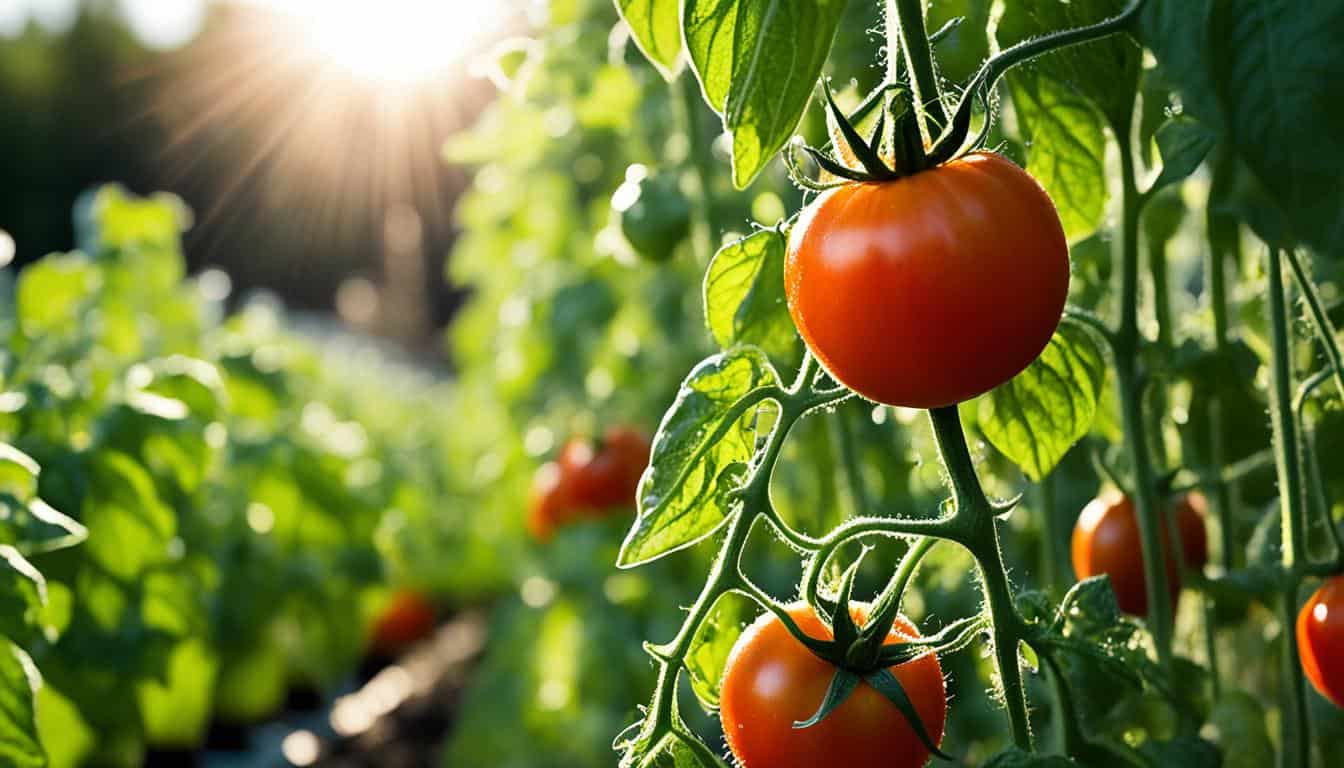
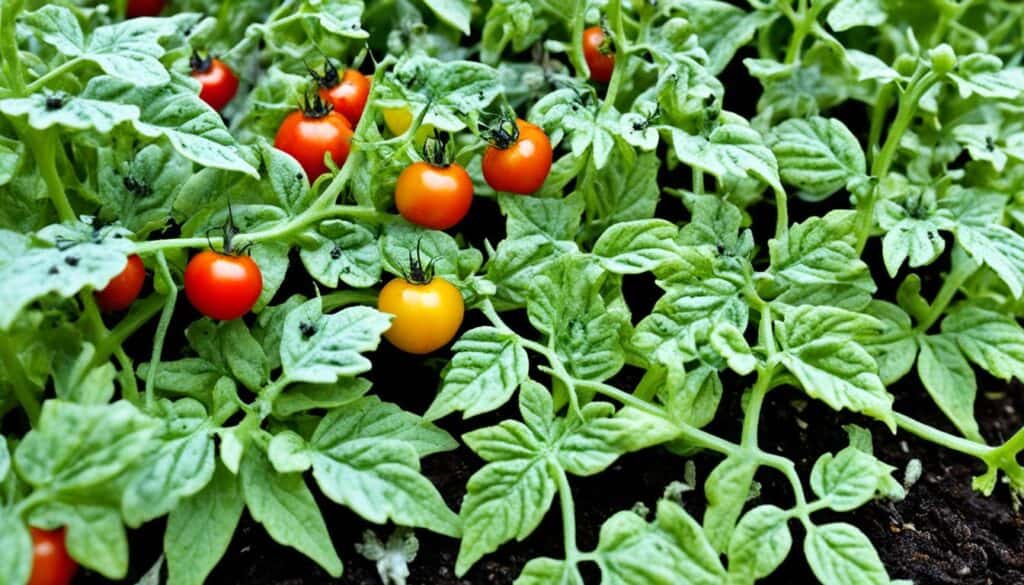
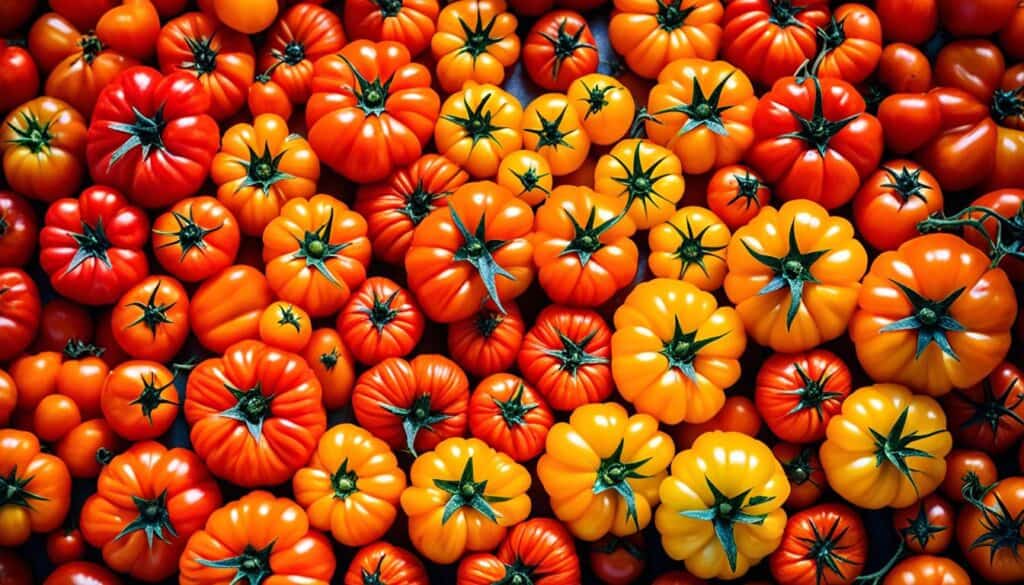
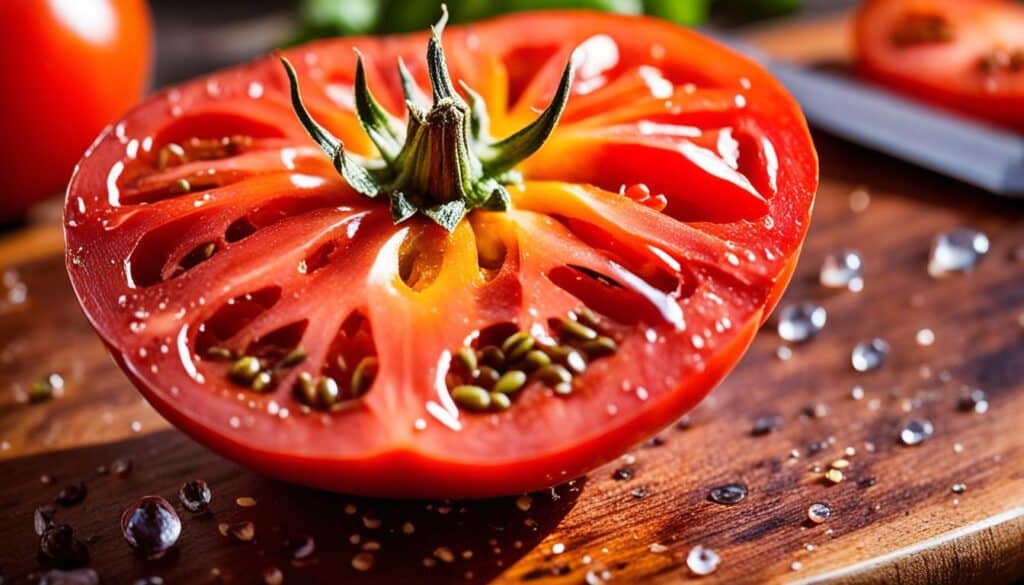
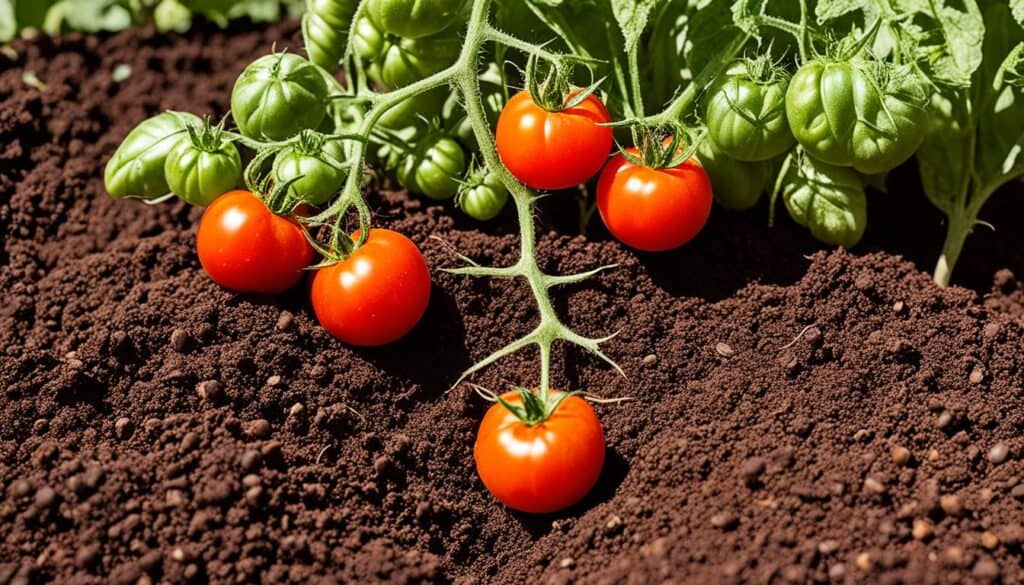



Leave a Reply